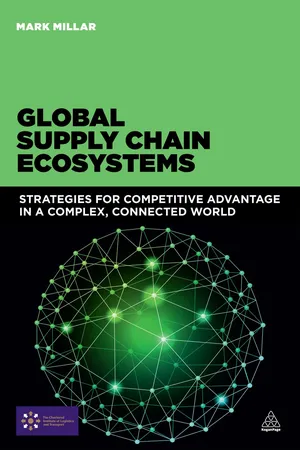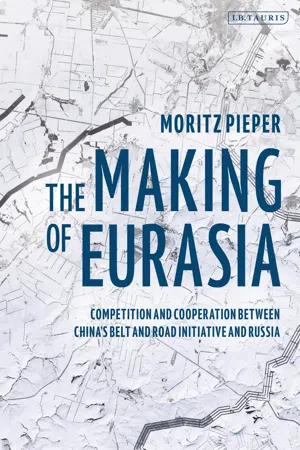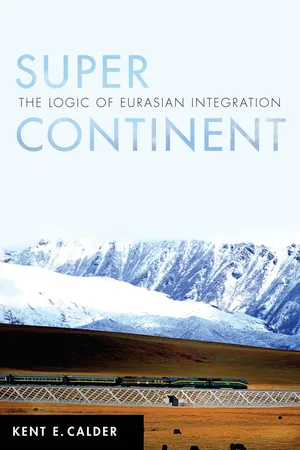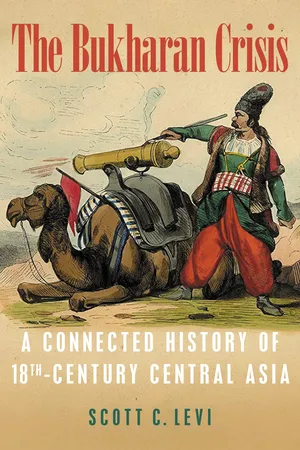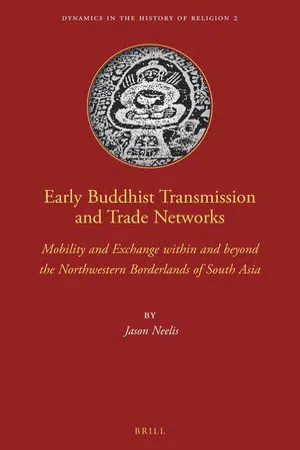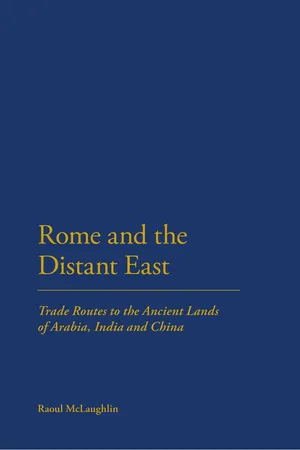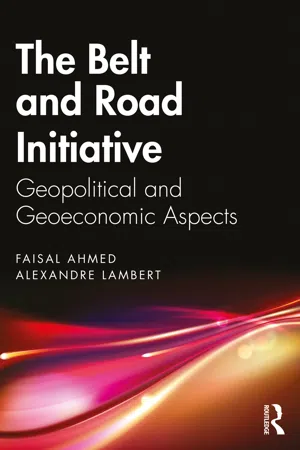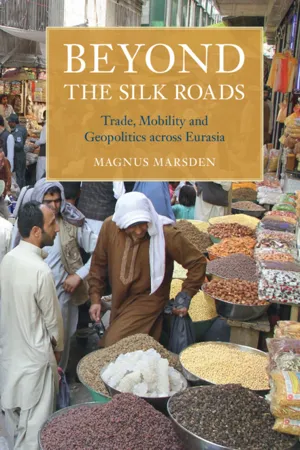History
The Silk Roads
"The Silk Roads" refers to the ancient network of trade routes that connected the East and West, facilitating the exchange of goods, ideas, and cultures between different civilizations. This network played a crucial role in shaping the development of societies and economies across Asia, Europe, and Africa. The Silk Roads were instrumental in the spread of technologies, religions, and philosophies, contributing to the interconnectedness of the ancient world.
Written by Perlego with AI-assistance
Related key terms
1 of 5
11 Key excerpts on "The Silk Roads"
- eBook - ePub
The Belt and Road Initiative
A Pathway towards Inclusive Globalization
- Liu Weidong(Author)
- 2019(Publication Date)
- Routledge(Publisher)
The Silk Road refers to the general term for long-distance commercial trade and cultural exchange routes gradually developed from ancient times, stretching through Eurasia and even reaching northern and eastern Africa. The Silk Road is a product generated from the interaction of material and spiritual culture between ancient China and other countries and nations, the result of collisions of Eastern and Western civilizations, and also an embodiment of the Chinese nation’s pioneering spirit in history. The Silk Road, from the perspective of history, connecting Eastern and Western cultures, enriched people’s material life of those ethnic groups and countries along the Road and facilitated the civilization process of the world. It was, looking back to the history of more than 2,000 years, not some fixed trade route but a bridge for communication between the West and the East. The specific routes of the Silk Road constantly changed as geographical conditions changed and the political and religious situation evolved. The opening and the prosperity of the Silk Road have promoted the socioeconomic development of a large part of the world’s most densely populated area in terms of politics, economy and culture. And the history of the Silk Road is the history of goods exchange, trade intercourse, and cultural interactions among the countries, ethnic groups, and various regions along the Road, which benefit greatly from such exchanges.The Silk Road has profound economic and cultural foundations, and is the result of the highly developed human civilization. The great economic and cultural development of these countries and ethnic groups along the Road laid the foundation for the Road. Without the emergence and development of the Eastern and Western civilizations along the Road, there would be no Silk Road. The great development of economy and culture in countries along the Road created great material foundations for the emergence and opening of the Silk Road, while the differences in natural endowments and economy generated a strong desire and demand for material and cultural exchanges among people in those regions. - eBook - ePub
Global Supply Chain Ecosystems
Strategies for Competitive Advantage in a Complex, Connected World
- Mark Millar(Author)
- 2015(Publication Date)
- Kogan Page(Publisher)
07 The New Silk Road connecting Europe and AsiaAn historic trade route revived for the 21st century
For more than two millennia the Silk Road has provided a trade route between China in the Far East through the Middle East to Europe, starting from Xi’an (formerly Chang’an) in central China and reaching all the way into the Mediterranean. Trade along this ancient route began in the third century and over the years has extended beyond just the transportation of goods, also providing a means for the exchange of ideas and culture between China, India, Persia, Arabia, Greece and Rome. The Silk Road reached peak activity in the 13th and 14th centuries, after which trade gradually declined as the Mongol and Byzantine empires faded and the powers along the route became more separated culturally and economically. The name ‘Silk Road’ itself does not originate from the Romans but is a 19th century term, coined by the German scholar, Ferdinand von Richthofen.Historically, the term Silk Road meant a network of different routes which, while all running generally from east to west and vice versa, were in reality a network of roads connecting trade centres across the entire continent. The northern route ran from Shangdu across the grasslands and north of the Caspian and Black Seas into central Europe; the main central route ran from south of Beijing through Xi’an and Samarkand into Damascus; a shorter journey linked Chendgu with India, and the marine Silk Road followed the same routes as today from the east coast of China south through the straits of Malacca to Egypt.Explorer Marco Polo travelled the Silk Road to reach China and in his writings described in detail Chinese politics, economy and culture. His exploits generated considerable interest in the region from the courts of Europe and had a powerful effect on the growth of European navigation. - eBook - ePub
The Making of Eurasia
Competition and Cooperation Between China's Belt and Road Initiative and Russia
- Moritz Pieper(Author)
- 2021(Publication Date)
- I.B. Tauris(Publisher)
2 Reviving the Silk Road: China’s new approach to Central Asia From the ancient Silk Roads to ‘One Belt, One Road’At a time when the Han Dynasty was expanding westwards (206 BC to 220 AD), Central Asia became the centrepiece in one of the first truly global trading networks, with merchants, explorers and scientists exchanging goods, technology and ideas along a route that extended from Xian in central China over 4,000 km to Europe. Chinese silk and porcelain, Indian ivory, spices and shawls were traded for gold, glass and precious metals, while philosophy, the arts, crafts and science benefited from an inter-cultural fertilization that this cross-country route made possible. The Silk Road scholar Valerie Hansen referred to it as ‘one of the most transformative super highways in human history’.1 Silk Road exchange popularized the domesticated horse as well as wine grapes and viniculture across the whole of Eurasia.These ‘Silk Roads’, however, were not necessarily trade corridors between the two extreme geographical poles, China and Europe. Rather, these were economic corridors that allowed local tradesmen to make profit as they bought goods in China and re-sold them elsewhere, and vice versa. These ‘proto-globalizers’, as James Millward calls them,2 crisscrossed the Eurasian landmass and turned the various Silk Roads into something more complex than what the shorthand of a silk road as an East-West route between China and Rome suggests.3 Merchants and intermediaries around the Red Sea and Arabian Sea travelled between caravanserais and urban settlements and probably had an interest in even discouraging direct commercial connections between China and the Roman empire.4 Surveying the archaeological and textual evidence, Hansen concludes that there was far less contact between the Han dynasty and ancient Rome than what the popular narrative about ‘the Silk Road’ suggests.5 - eBook - PDF
Super Continent
The Logic of Eurasian Integration
- Kent E. Calder(Author)
- 2019(Publication Date)
- Stanford University Press(Publisher)
It was nearly 2,150 years ago that a Chinese imperial envoy, Zhang Qian, first voyaged to the west, into the Fergana Valley of Central Asia, on a dip-lomatic mission with fateful longer-term consequences for regional trade. 3 Fourteen hundred years later, Marco Polo popularized the notion of East-West cultural exchange, with his epic two-decade overland voyage from Ven-ice to China (1271–1292). And a bit more than 140 years ago, an aristocratic German adventurer, Baron Ferdinand von Richthofen, in 1877 coined the term Silk Road , traversing the territory that Zhang and Polo had trodden centuries before. Both the abstract concept and the physical reality of the Silk Road have thus been around for some time. Broadly speaking, in both concept and real-ity, the “Silk Road” has generally denoted a cross-cultural interaction of the East and the West, devoid of American dominance. There has been tremen-dous variation across history in the intensity of human interaction along the different “Silk Roads,” not to mention in the very popularity of the Silk Road concept itself. 4 Yet many features have been recurrent, as we shall see. In this chapter we review the varied yet structurally parallel usages of “Silk Road” over history, in diverse corners of the world, relating them to the ac-tual history of East-West transcontinental interaction among East and South Asia, Europe, the former Soviet Union, the Middle East, and to some extent Africa. This context will allow us to grasp with the greatest possible clar-ity commonalities particular to the “Silk Road Syndrome.” It will therefore show us the historic nature of the transformations toward Eurasian interde-pendence and centrality now unfolding in the “post-post-“ Cold War world, together with their unprecedented global systemic implications. - eBook - ePub
The Bukharan Crisis
A Connected History of 18th Century Central Asia
- Scott C. Levi, Scott Levi(Authors)
- 2020(Publication Date)
- University of Pittsburgh Press(Publisher)
TWO
SILK ROADS, REAL AND IMAGINED
Scholars have studied the cultural exchanges that unfolded along the network of Central Asian routes of commerce and communication popularly known as the Silk Road for well over a century, since even before Sir Aurel Stein, Sven Hedin, Paul Pelliot, and other scholar-adventurers first led expeditions into Xinjiang (Altishahr to the local population).1 Their collective work has done much to illuminate the trans-Eurasian transmission of scientific knowledge and technologies, religions, languages and literary traditions, artistic motifs, fine silks and other merchandise, and much more. At the same time, considerably less attention has been directed to the Silk Road traders themselves, the actual individuals and merchant groups whose labors are credited (often mistakenly so) for having propelled these cultural exchanges.The primary objective of this chapter is to identify a number of false assumptions long embedded within the Silk Road paradigm. Paramount among these is the notion that Central Asia’s economic prosperity rested wholly upon the region’s ability to mediate China’s westward trade. Although the concept of the Silk Road was derived in the West, its history is most often presented from the Chinese perspective, with Central Asian traders playing the role of cultural intermediaries and functioning as subsidiary agents and middlemen cargo carriers whose principal economic activity involved moving Chinese goods to the Mediterranean and, to a lesser extent, linking the latitudinal caravan routes with India. Too often, scholars working in various subfields of what might be termed “Silk Road Studies” have uncritically accepted and propagated this perspective, and in a number of important ways this has resulted in a Sinocentric distortion of Central Asian history. - eBook - ePub
Pacific Centuries
Pacific and Pacific Rim Economic History Since the 16th Century
- Dennis O. Flynn, Lionel Frost, A.J.H. Latham, Dennis O. Flynn, Lionel Frost, A.J.H. Latham, Dennis O. Flynn, Lionel Frost, A. J. H. Latham(Authors)
- 1998(Publication Date)
- Taylor & Francis(Publisher)
(die Seidenstrasse) was coined by the nineteenth-century German explorer Baron Ferdinand von Richthofen. Although silk was perhaps the most important commodity that traveled along the Road, others such as precious metals and stones, spices, porcelain and textiles also passed through. However, the Silk Road was perhaps more significantly an avenue for the exchange of ideas. Some of the most fundamental ideas and technologies in the world—methods of making paper, printing, and manufacturing gunpowder, among many others—made their way across Asia via this highway. Migrants, merchants, explorers, pilgrims, refugees, and soldiers brought along with them religious and cultural ideas, domesticated animals, plants, flowers, vegetables, fruit, plagues and disease, as they joined this gigantic cross-continental exchange. The Silk Road, as so rightfully claimed, was the melting pot, the lifeline of the Eurasian Continent (Franck and Brownstone 1986:2; Werblowsky 1988). In East Asia, the Silk Road has long been enshrined as a symbol of cross-cultural exchanges of religions, commodities and technology.This chapter, motivated by the concept of the Silk Road as an avenue of exchange of goods and ideas, concerns the history of global trade and technological diffusion. The trading history of silk presents a classic case for studying the incremental and cumulative nature of growth of trade and the stock of knowledge made possible by the increasing human interactions and improved means of transportation. The chapter is divided into three parts: the first brings together a brief narrative of the long history of the silk trade and the technological diffusion on the overland route. The second focuses on the sea route and the third presents a discussion of the interactions among trade, technological and institutional progress and the transportation systems on the overland and sea routes.Silk Road: the overland system
The Road: its beginning and consolidation
Sericulture and silk weaving had been established in the Yellow River and Yangtze River areas of China thousands of years before Christ. Production of silk started in China between perhaps 5000 and 3000 BC (Fan and Wen 1993:2). This great Chinese invention began with the ingenious discovery of reeling silk threads off wild silkworm cocoons, followed by the conscious domestication of silkworms. The making of silk could be roughly divided into three main stages. Sericulture denotes the process of planting mulberry trees, feeding silkworms, and subsequently collecting cocoons spun by the silkworms. Then, from these cocoons, farmers could reel off long and continuous threads and wind them onto bobbins to form the so-called raw silk. Finally, raw silk (sometimes after an additional process of twisting or “throwing”) was left to silk weavers (or knitters) to turn into silk cloth.1 - Jason Neelis(Author)
- 2011(Publication Date)
- Brill(Publisher)
Tis treatment is more specifcally concerned with lines of com-munication between China and a chain of garrisons and agricultural oases in the Tarim Basin of modern Xinjiang. Chinese sources refer to 1 For a history of the term “Silk Road” see Foltz, Richard. 1999. Religions of the Silk Road: Overland trade and cultural exchange from antiquity to the f feenth century . New York: St. Martin’s Press, 1–2 and Härtel, Herbert, and Marianne Yaldiz. 1982. Along the Ancient Silk Routes: Central Asian art from the West Berlin State Museums . New York: Metropolitan Museum of Art, 15. Since the so-called Silk Road is a mis-nomer which gives the impression of a single route rather than a network of routes, “silk routes” is adopted as an expression for the multiple itineraries for long-distance travel, trade, and cultural exchange. 2 Liu, Xinru. 1998. Te Silk Road: Overland trade and cultural interactions in Eur-asia . Essays on Global and Comparative History. Washington, DC: American Histori-cal Association. 3 See chapter 3: Seaports and Maritime Routes across the Indian Ocean in Chapter 3 pp. 224–225 for a discussion of the overland network from Zeugma on the Euphrates in present-day Iraq to Kandahar in southeastern Afghanistan described in the Stath-moi Parthikoi (Schof 1914). 292 chapter six these frontier borderlands as the “Western Regions” ( Xi-yu ), a general term for all of Central Asia, but more ofen applied to “eastern Central Asia” instead of “western Central Asia.” 4 Te branches and extensions of the silk routes through eastern Central Asia were connected with South Asia via a network of capillary routes through northern Paki-stan, as detailed in the preceding chapter.- eBook - PDF
Rome and the Distant East
Trade Routes to the ancient lands of Arabia, India and China
- Raoul McLaughlin(Author)
- 2010(Publication Date)
- Continuum(Publisher)
4 Trade Routes through Asia and the Silk Road Connection In ancient times, vast overland trade routes stretched across Central Asia bringing Chinese goods into India and the Middle East. Modern scholars often refer to these trade systems as ‘The Silk Roads’ to emphasize that silk was the most distinctive commodity involved in this commercial traffi c. 1 In reality, the Silk ‘Road’ was formed from several regional trade routes that connected together in Inner Asia to facilitate the movement of goods from India and China into the west. These commercial networks were connected to Roman territory through a number of important trade routes. Deep within Central Asia, the distant land of Bactria, was connected to the Tarim territories and the outer parts of northwest India. Bactrian trade routes followed the Oxus River northward to the landlocked Caspian Sea and the Eurasian Steppe. Goods arriving in these regions were taken west through passes in the Caucasus Mountains that separated the Caspian from the Black Sea. This was the outer edge of the Roman Empire and Greek communities on the shores of the Black Sea received Eastern goods via these routes. These northern trade networks avoided the core territories of the Parthian Realm, but were controlled by Colchic mountain tribes and steppe populations around the Caspian. The trade routes of Central Asia were also connected to Parthian Mesopotamia. Caravans conveyed merchandise across the desert plains of Iran along overland trade routes that passed directly through Parthian territory. Hostility between Rome and Parthia discouraged Roman traders from using this route, so only a small number of individuals from the Empire travelled across Iran to reach Bactria. From Bactria, The Silk Roads extended east through the Tarim territories to the edges of China. By using these trails, a few fortunate Romans were able to reach the Chinese Empire. - eBook - ePub
Geocultural Power
China's Quest to Revive the Silk Roads for the Twenty-First Century
- Tim Winter(Author)
- 2019(Publication Date)
- University of Chicago Press(Publisher)
The previous chapter noted the development of various multilateral and unilateral initiatives for transboundary infrastructure during this period, and in 2011 Hillary Clinton followed these up with the launch of the New Silk Road Initiative. The project failed to achieve its goals, but the idea had arrived of a new Silk Road for the modern era, envisaged around pipelines, transcontinental rail, energy production, and cross-border trade. But what Starr and Clinton’s strategy lacked was an understanding of how their new Silk Road mapped onto a narrative of history being propelled forward by rapid changes in the region. The Silk Road is a story of internationalism, and as this chapter has demonstrated, such historical narratives require a particular ecology in order to blossom. The arc of depicting collective pasts in the twentieth century was defined by the interplay of nationalism and internationalism. Across Asia, the former invariably remained the prevailing paradigm, particularly in the contexts of postcolonial nation building and the nationalist imperatives advanced in the creation of the Soviet Union. Late twentieth-century globalization complicated this balance, and the rise of The Silk Roads as a brand and concept on the international stage during this period speaks to this shift. But as this and subsequent chapters indicate, it is a narrative of transregionalism and internationalism that is continually subverted by national interests. In this regard, China follows the footsteps of India, Japan, Turkey, and others.In tracing the biography of the Silk Road as a concept since the late nineteenth century, we see the different ways the Silk Road has proved a compelling landscape of the imagination. Tales of travel to far-off lands passed down from the accounts of late nineteenth-century explorers, and the enduring fascination of figures likes Marco Polo and Xuanzang embody a sense of adventure. For today’s tourists the romance of the road comes from the promise of traveling back in time, meeting cultures “untouched” by modernity. And for the real romantic, adventure holidays retrace the routes of camel caravans or the footsteps of famed travelers. In addition, it has been argued that this grand narrative of connectivity has come to be imbued with an aura of cross-cultural exchange and cosmopolitanism, themes that have permeated the worlds of academia, cultural policy, film, and television, among others, as well as forms of international cooperation. But as we have also seen, once such ideas enter the museum and world of intergovernmental policy, or the speeches of politicians and diplomats, they are encased in a language of peace and international harmony. Chapter 5 - eBook - ePub
The Belt and Road Initiative
Geopolitical and Geoeconomic Aspects
- Faisal Ahmed, Alexandre Lambert(Authors)
- 2021(Publication Date)
- Routledge India(Publisher)
https://www.academia.edu/32345515/A_Histo_Geographical_Account_Of_Silk_Route_The_Caravan_Of_Trade_Culture_And_Political_Hegemony .- Wikimedia, “Iran on the Globe (Afro-Eurasia Centred)”, https://commons.wikimedia.org/wiki/File:Iran_on_the_globe_(Afro-Eurasia_centered).svg , accessed on 12 February 2021.
- Beijing would be finally established as China’s capital city only in the 16th century. Already by the time of the Han Dynasty, Xi’an counted 1 million inhabitants, and during the Tang Dynasty, it even grew further. “Chang An”, Ancient China, http://www.ancientchina.org.uk/xian .
- De Freitas, Maria José, “The Silk Road : A Sustainable Cultural Route”, Academia, https://www.academia.edu/36376441/The_Silk_Road_A_Sustainable_Cultural_Route .
- “1943 Fortune Magazine Persuasive Map of the World during World War II”, Geographicus, https://www.geographicus.com/P/AntiqueMap/worldisland-fortune-1943 , accessed on 22 February 2021.
- Mackinder, H.J., “The Geographical Pivot of History”, The Geographical Journal, Vol. 24, No. 4 (1904), 435. In: Banerjee, Mallicka, and Mukherjee, Anindita, “Reconstruction of European Geopolitics with a Special Reference to Mackinder’s Heartland Theory”, International Journal of Trend in Scientific Research and Development (2018), https://www.semanticscholar.org/paper/Reconstruction-of-European-Geopolitics-with-a-to-Banerjee-Mukherjee/0834aeb737d3428afce621cdae71ffaf418dcf55 , accessed on 22 February 2021.
- Parchment paper was made of specially prepared untanned skins of animals, primarily sheep, calves, and goats.
- Toniolo,
- eBook - PDF
- Magnus Marsden(Author)
- 2021(Publication Date)
- Cambridge University Press(Publisher)
These have, rather, re-emerged in a new and different range of ‘sites of inter- action’, adapting and altering as they have done so. 75 Alternative Geographies Conventional geographies of the so-called New Silk Road often dwell on the transformative significance of new ports and specially constructed commercial ‘hubs’ for Eurasian economic and political connectivity. New or redeveloped ports in the Persian Gulf – such as the Indian- and Iranian- funded Chabahar in Iran or the Chinese-built Gwadar in Pakistan – will facilitate connectivity between India and the Central Asian states and China and the maritime routes of the Indian Ocean. 76 Scholarship also emphasises the ways in which such hubs will extend the military reach of global and regional powers into spaces that fall well beyond their ‘sphere of influence’. 77 Similarly, political decision-making processes affecting trade and commerce across Eurasia are widely analysed in terms of government policies arising out of influential Eurasian capital cities: Beijing, New Delhi, Istanbul, Riyadh, Dubai and Moscow, most notably. 78 There is also growing recognition of the strategies deployed 74 See the preface in Cordell 2018. 75 Harper and Amrith 2012. 76 Anwar 2013. 77 Daniels 2013. 78 Friedman 2019. 24 Introduction: Beyond The Silk Roads by ‘emerging’ states – such as Kazakhstan, Azerbaijan and Mongolia – to navigate their relationships in a field overcrowded by ‘great players’. 79 Existing analysis of the intersections between geographies of economic and political power in the Eurasian arena reflects the wider tendency for scholars to address regional dynamics through the lens of the nation state. 80 The overwhelming emphasis in much work that purportedly concerns regional connectivity is actually on the role played by nation states or formal associations of nation states – such as the Shanghai Cooperation Organisation – in forging and eroding connectivity across national boundaries.
Index pages curate the most relevant extracts from our library of academic textbooks. They’ve been created using an in-house natural language model (NLM), each adding context and meaning to key research topics.

